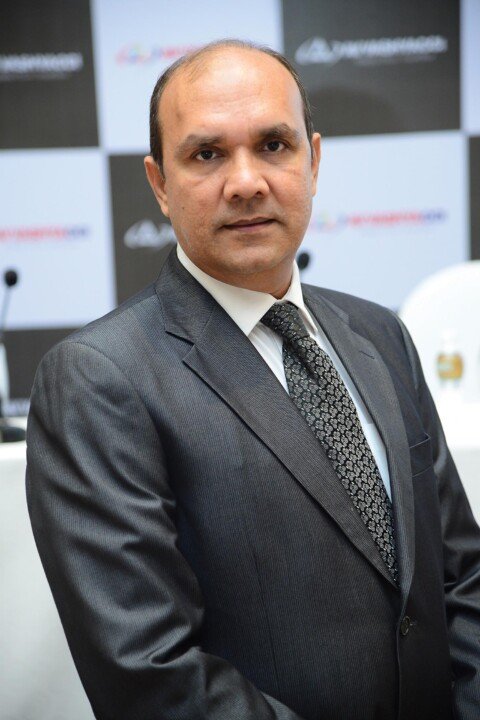There is no doubt that the booming EV industry is now in a time of supply-chain uncertainty, as COVID-19 has been sending ripples through global supply chains, creating issues with sourcing, lead times and transportation of components. One component that is currently in high demand is lithium-ion batteries, and this is causing a big strain on supply chains. It is clear that, to ensure the success of the EV industry, manufacturers and suppliers need to meet these challenges head on. What’s more, China is the largest producer of lithium hydroxide used in electric car batteries, but they are currently still engaged in trading tensions with India. This has been compounded by the fact that production costs and logistical difficulties are being caused by the COVID-19 outbreak, so the supply of lithium hydroxide worldwide has been halted. In general, Dhivik A, CEO, Go Green EOT, says that there needs to be a more integrated approach in the supply chain, with all players working together for the betterment of the industry. Manufacturers will need to be flexible in their approach to creating EVs by reviewing their supply chain and looking for alternative options in terms of suppliers. Excerpts from his interaction with Upamanyu Borah.
It is expected that EVs will become cheaper than combustion vehicles in the next three years. Being at the helm of an emerging company in the sector, how do you see this? What needs to be done or aligned for a seamless EV supply chain at place?
India’s focus on next-gen mobility has got a further boost under the current government, despite the ‘National Electric Mobility Mission Plan’ (NEMMP) 2020 having been unveiled back in 2013 by the past government. This has since highlighted the concerted efforts being put into promoting green mobility and electric vehicles with many adopting a 360-degree approach to turn India into an EV nation.
That said, there is mass adoption of EVs expected in the next 5 years. Industry leaders and stakeholders are optimistic that this shift will be accelerated owing to reasons like the number of industry incumbents and start-ups making significant and rapid advancements in the EV segment.
The growth trajectory of the Indian EV market in future will majorly depend on the strength of the EV infrastructure in place as well as the awareness around the need for EV adoption. Also, to overcome supply chain issues, there is a need to promote local manufacturing of components and eliminate the dependence on China and other countries for import of batteries and other required parts. The centre needs to focus on ‘Make in India’ to ensure there’s a seamless EV supply chain in place.
There’s a lot of excitement about electric vehicles, with many in the industry even talking about requiring all new cars to be electric by 2035. Where do you see this going? How would the EV supply chain adapt to the related challenges and opportunities?
The Indian government is striving to make 30 per cent of Indian vehicles fully electric by 2030. In light of this, we too will be gunning to set up bigger factories for manufacturing of batteries. Being part of this growing industry, we are open to listening to new and innovative ideas, and implement newer innovative ideas at the company-level.
To strengthen EV start-ups and other players in the ecosystem, it’s imperative that the government adopts certain measures such as offer more incentives; tax rebates or cuts for every stakeholder – manufacturers and consumers included; facilitate access to capital for both R&D and manufacturing; promotion of indigenous capacity and technology; creating infrastructure which can support shared mobility; and promote mobility-as-a-service using EVs.
In addition, government should subsidise manufacturing for each aspect of an EV. While better researched go-to-market strategies will enable manufacturers to manage their roll-outs in an amplified manner.
The rise in e-commerce and delivery business post-COVID-19 has given a new lease of life to the last-mile and multimodal transportation— accelerating business opportunity for the EV ecosystem. How is Go Green preparing to tap into the emerging market scenarios?
Due to the looming threat of COVID, majority of the people will avoid travelling in public transport due to high chances of contamination. In such a case, the only alternative becomes the EVs, as an economical as well as a safe mode of transportation. Therefore, financial stimulus packages and policy efforts by the government must enable a green transition pathway—as today’s policy measures will form the basis of tomorrow’s institutional, political, and infrastructural frameworks, re-shaping society after the historic impact of the pandemic.
Making the green choice is essential to India’s future—delivering new jobs and businesses through a clean, green transition. But that said, e-commerce and last-mile delivery vehicles where the rider currently owns the vehicle, is undergoing a massive shift. This works perfectly well with quality product from EV companies. But, the challenge is quality products. This is where the adoption will take time since a product has to prove its mettle in the last-mile delivery market, and once that is done, the runway for sales would be a great opportunity to capitalise.
The new feature requirement and time to market for EVs has completely changed, thus challenging the traditional methods of design and development of EV products. What has the role of holistic technology to play here to accelerate the inbound and outbound supply chain — production and distribution?
Yes, there sure is a faster time to market with EVs as compared to ICE-powered vehicles, but the challenge is in understanding the operation of EVs first and optimising it for performance parameters. This learning curve is one key area that will define foresight for EV companies in terms of success and failure.
With faster and newer product development come challenges of supply chain. To forecast a sunrise industry as EVs is extremely hard from demand and supply perspective and again, these are areas which will define success for EV companies.
Rest apart, what are the ramifications of smart vehicles and their digital requirements on IT globally??
As this new wave of EVs takes over, there is a desire and need for constant innovations within the electric vehicle industry which will require a more robust infrastructure for accommodating the rising consumer demand. Very soon, there will be EV models that will leverage technologies like AI and ML and as we take note of the numbers, there is a significant rise which cannot go unnoticed.
Electric vehicles have an innate potential to be a computer on wheels. This is already happening globally and we see that trend coming to India soon. With the advent of the Ambassador car from HM, we were completely mechanical as a product, we moved to 5 per cent software-driven with vehicles from Hyundai and Ford in early 2000’s, and now we are certain to see the amount of software component in EVs increase multifold.
The exponential growth of EVs going up to 2030 will introduce major opportunities as well as challenges for the conventional OEMs, new-entrant— OEMs, the captive finance companies, and dealerships.
In particular, the traditional OEMs will stand to gain big from the rise of EVs and accordingly, they will have to re-prioritise their customers and strategies in a volatile competitive landscape. Adopting a new approach to market segmentation is paramount to seize new opportunities and manage risks and challenges involved.
Finally, as new business models emerge from the crisis, can you become the nexus of an innovative, emerging ecosystem that’s built for the ‘next normal’?
With EVs, there would not only be innovation in terms of the vehicle perspective but also from supply chain and dealership perspective, since EVs will upend the existing models of dealership in the automotive segment.
We surely are striving at being amongst the top players in the field. We have significant market share in the B2B side of business. Post-COVID, we moved ahead to the B2C segment where we are appointing dealers and distributors. We already have appointed close to 4 distributors and 36 dealers.
Our business models connecting dealers and distribution is technology-based rather than only being sales and incentive-based.






